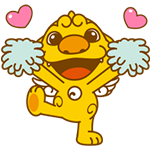A few years after graduation, I went to a post office to send a letter to a friend. I bought a postage stamp from the commemorative series "Beautiful Korea Definitive Stamps" featuring nine domestic landmarks including Dongbaekseom Island in Busan, Namdaemun (Sungnyemun) Gate in Seoul and Hwaseong Fortress in Suwon, Gyeonggi-do Province.
Even a tiny stamp holds a lot of information on Korea, I thought. So I decided to learn more about the country through stamps and eventually started collecting those displaying landmarks and people. This series is my introduction to Korean history and culture through stamps issued by the Korea Post.
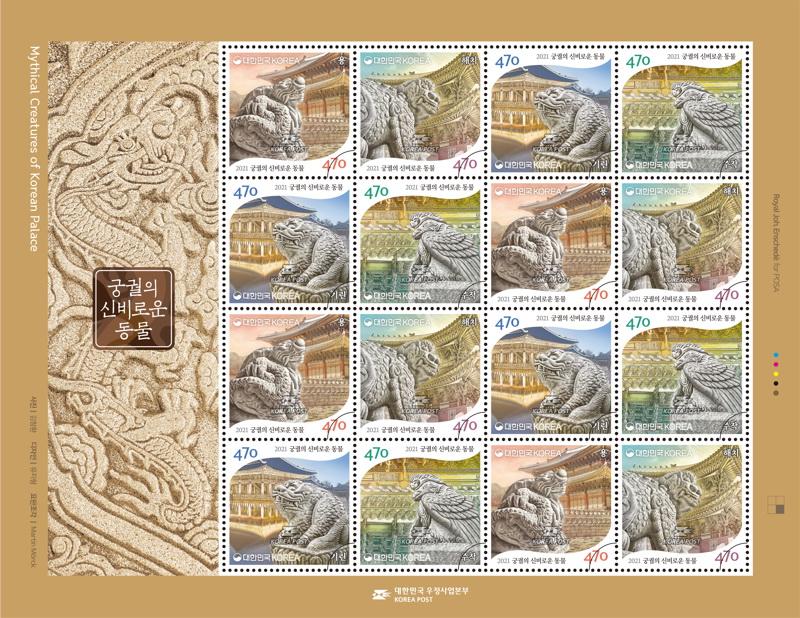
The Korea Post on June 22 issued the commemorative 16-stamp series "Mythical Creatures of Korean Palaces." (Korea Post)
By Elias Molina and Yoon Hee Young
The Korea Post on June 22 issued the commemorative 16-stamp series "Mythical Creatures of Korean Palaces" featuring traditional beasts from Korean legends and lore.
Gyeongbokgung Palace in downtown Seoul is the home of four of the mythical animals. As the first residential palace of the Joseon Dynasty king, Gyeongbokgung houses stone statues of the four in and out of the building all made in the 1860s, when Heungseong Daewongun, the regent of Joseon, rebuilt the palace.
Visitors can discover hidden statues there. The animals each symbolize the royal family's authority, dignity, law and justice, and guardianship.
Park Jong-seok, head of the Postal Service Group at the Korea Post, said, "Through this month's stamps, I hope that visitors can feel the dignity of the 500-year-old Joseon Dynasty when seeing the mythical animals while walking around Gyeongbokgung Palace."
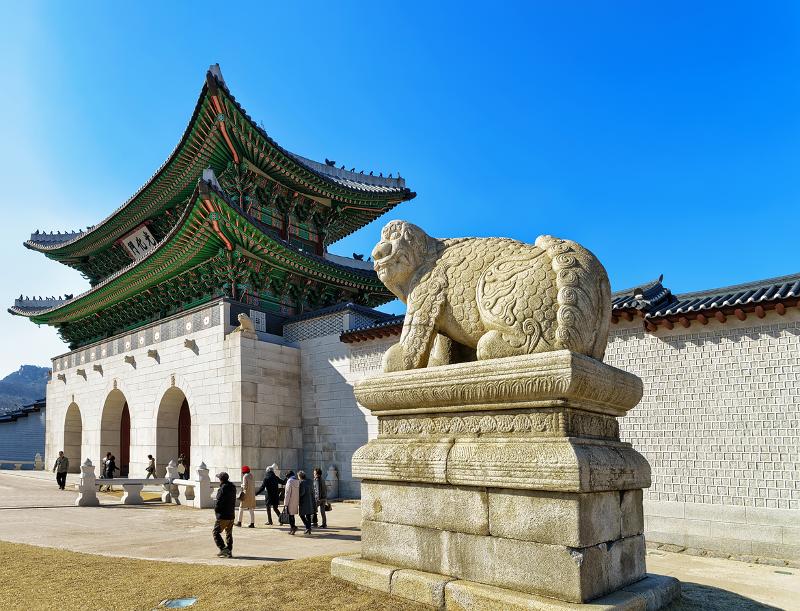
A statue of Haechi, a single-horned beast, stands in front of Gwanghwamun Gate, the main gate of Gyeongbokgung Palace in Seoul. (iStockphoto)
Haechi
The left and right sides of Gwanghwamun Gate, the main gate of the palace, are where two animals looking like a dog or lion guard the entrance. The single-horned creature Haechi is said to have extraordinary judgment and foresight. Legend says that in a quarrel between two people, Haechi punished an irrational person with its horn. The statue symbolizes law and the ruling Joseon principle of achieving an era of peace and prosperity.
Haechi is considered an auspicious animal to defeat fire or disaster, and a statue of it usually stands at the entrance of other palaces including Sungjeongjeon Hall of Gyeonghuigung Palace, Geunjeongjeon Hall of Gyeongbokgung Palace and Yeongyeongdang Hall of Changdeokgung Palace.
|
|
|
 |
The Seoul Metropolitan Government on May 13, 2008, selected Haechi as a symbol of the capital based on the statue of the mythical creature at Seoul's Gwanghwamun Gate. (Seoul Metropolitan Government)
The creature is also a symbol of Seoul. The Seoul Metropolitan Government on May 13, 2008, selected Haechi as a symbol of the capital based on the statue at Gwanghwamun Gate. The character is an embodiment of a mythical being that has been part of Seoul's culture and history for 600 years. Seeing sculptures of Haechi is easy anywhere in the city including Namsan Park and Myeong-dong Station.
Jujak
A statue of Jujak stands in front of Sangwoldae (an upper podium) at Geunjeongjeon Hall in Gyeongbokgung Palace. (Cultural Heritage Administration)
On the front of Sangwoldae (an upper podium) of Geunjeongjeon Hall at Gyeongbokgung Palace stands a stone statue of Jujak, a deity that guards the south. Its name means "Vermilion Bird" and looks like a phoenix spreading its wings. Though resembling a chicken, this bird is a gigantic six feet long (183 cm) according to legend, defeats ghosts and symbolizes longevity.
Girin
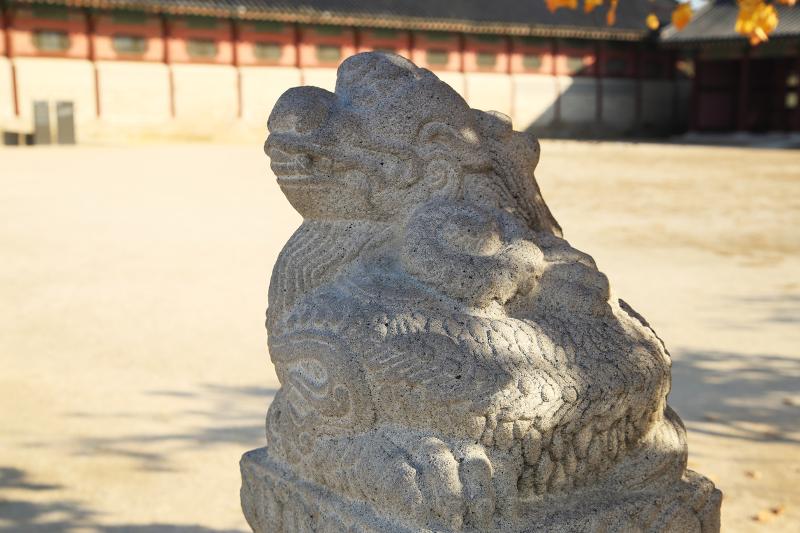
A statue of Girin is at Seoul's Gyeongbokgung Palace. (iStockphoto)
The creature resembles a dragon with its head, eyes, thick eyelashes and beard. Part or all of its body is covered with scales and seems similar to that of a cow or deer. Cloven hooves and one or two horns on its head are similar to those of the unicorn.
Girin symbolizes benevolence, the primary virtue of humanity in Confucianism, and appears before a saint is born.
Cheongnyong
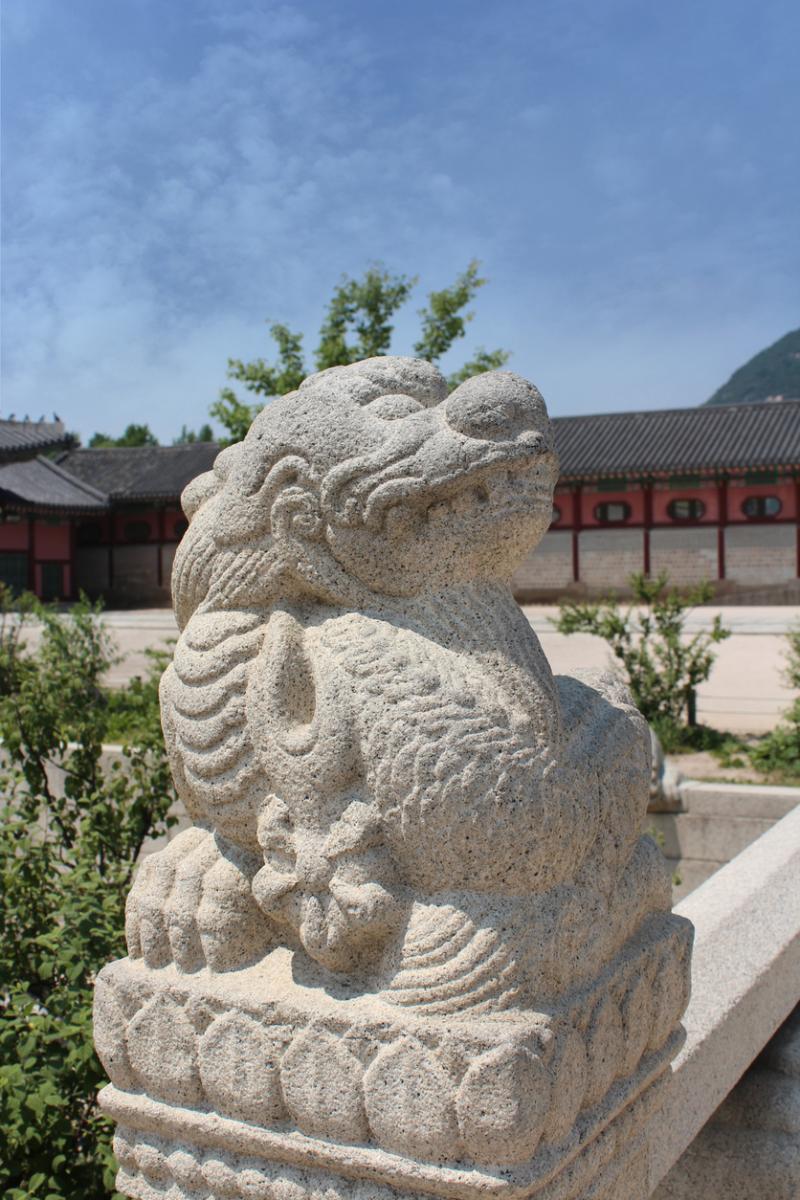
A statue of Cheongnyong stands in front of Geunjeongjeon Hall at Gyeongbokgung Palace.
A statue of Cheongnyong (azure dragon) stands at Woldae, a wide podium in front of the primary buildings of palaces in front of Geunjeongjeon Hall at Gyeongbokgung.
The blue dragon is an Eastern guardian deity whose drawing appears on the ceiling of Geonchunmun Gate, where royal families, vassals and court ladies entered and exited.
| How to buy stamps Stamps in the commemorative series "Mythical Creatures of Korean Palaces" can be purchased at the select post offices nationwide and the Korea Postage Stamp Museum or through the official website. Coming next month Watch for the release of the commemorative stamp series "Beautiful Lakes" (July 1) and "Coastal Seascape Roads" (July 15). |
eliasmolina@korea.kr

